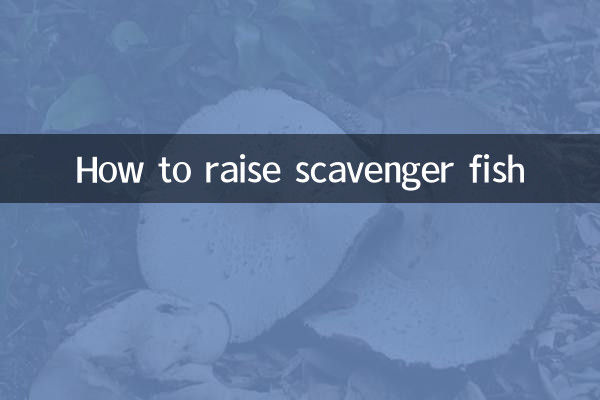How to raise scavenger fish
The scavenger fish is a common ornamental fish that is loved by many aquarists for its ability to clean algae and leftover food in the fish tank. However, raising scavenger fish also requires mastering certain skills and methods. This article will introduce in detail the key points of raising scavenger fish, including water quality requirements, feed selection, mixed breeding precautions, etc., to help you easily raise scavenger fish.
1. Basic information about scavenger fish

The scavenger fish, whose scientific name is "leopard catfish", is native to South America and is a bottom-dwelling fish. They feed on algae, leftover food, and organic debris, so they're called "tank cleaners." Scavenger fish are larger in size, reaching 20-30 cm in adulthood, and their life span is generally 5-10 years.
| project | content |
|---|---|
| scientific name | Leopard catfish |
| country of origin | South America |
| body shape | 20-30cm |
| life | 5-10 years |
| feeding habits | Omnivorous (algae, residual food, organic debris) |
2. The breeding environment of scavenger fish
Scavenger fish have high requirements for water quality and need stable water temperature and pH value. The following are the environmental requirements for scavenger fish:
| project | Require |
|---|---|
| water temperature | 22-28℃ |
| pH value | 6.5-7.5 |
| water hardness | Soft to medium hard water |
| Fish tank size | Recommend at least 50 liters |
| illumination | Moderate light, avoid direct sunlight |
3. Feed selection for scavenger fish
Although scavenger fish feed on algae and residual food, in order to ensure their healthy growth, they still need to supplement specialized feed. The following are food selection recommendations for scavenger fish:
| Feed type | illustrate |
|---|---|
| algae feed | Spirulina tablets, algae particles, etc. |
| sinking feed | Bottom feed specifically for bottom-dwelling fish |
| vegetable | Cucumber, zucchini, etc. (need to be cooked) |
| live bait | Red worms, water fleas, etc. (feed in appropriate amounts) |
4. Precautions for polyculture of scavenger fish
The scavenger fish has a gentle personality and is suitable for keeping with most ornamental fish, but the following points should be noted:
| Things to note | illustrate |
|---|---|
| Avoid mixing with aggressive fish | Such as large cichlids, fighting fish, etc. |
| Provide enough hiding spots | Scavenger fish like to hide, so provide them with driftwood, stones, etc. |
| avoid overcrowding | Make sure each fish has enough room to move around |
5. Common diseases and prevention of scavenger fish
Scavenger fish may encounter some health problems while raising them. The following are common diseases and their prevention and treatment methods:
| disease | symptom | Prevention and control methods |
|---|---|---|
| white spot disease | White spots appear on fish body | Raise the temperature to 30°C, add salt or treat with medication |
| fin rot | Fish fins are rotten and red | Improve water quality and use antibacterial drugs |
| Malnutrition | Slow growth, dull color | Supplement diversified feed |
6. Summary
Scavenger fish is a kind of ornamental fish that is very suitable for novices to keep. As long as they master the water quality, feed and mixed culture techniques, they can grow healthily. I hope this article can provide you with a useful reference, and I wish you happy fish farming!

check the details

check the details